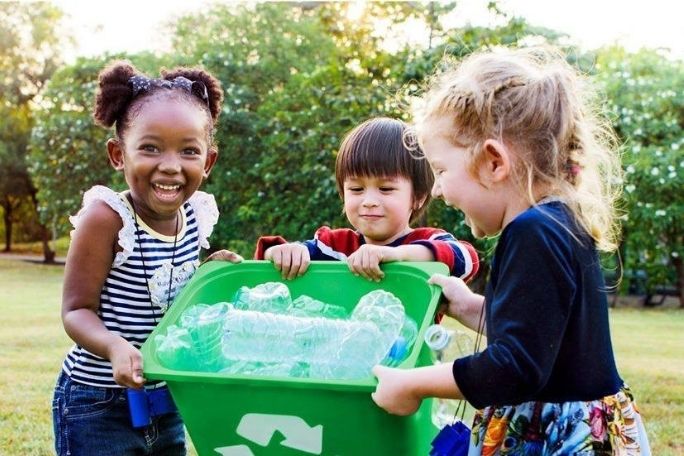Lesson summary
Children interact with a range of materials and consider the properties of materials used in packaging and container packaging. They explore what materials can be recycled including what can be recycled with the ACT Container Deposit Scheme (ACT CDS). They then work together to create new bins or labelling to reflect which materials are eligible for recycling.
Learning goals:
- Children enjoy cleaning up waste from natural environments and understand how to sort that waste between recycling and landfill.
Lesson guides and printables
Lesson details
Curriculum mapping
Learning Outcome 2:
- Children are connected with and contribute to their world
- 2.4 Children become socially responsible and show respect for the environment
Learning Outcome 4:
- Children are confident and involved learners
- 4.2 Children develop a range of skills and processes such as problem solving, inquiry, experimentation, hypothesising, researching and investigating
Learning Outcome 5:
- Children are effective communicators
- 5.2 Children begin to understand how symbols and pattern systems work
Resources required
- A handful of pebbles or gumnuts – ensure these are kept in a safe place away from children.
- A range of waste items that vary in colour, weight, shape and texture. These could include some used paper, newspaper, a small plastic tub, plastic bottle, a milk carton, and a paper bag. Make sure all items are clean and sharp edges are covered with masking tape. Alternatively, use these cards with images of recyclable and non-recyclable containers.
- Colouring sheet
- Images of eligible drink containers for the ACT CDS, to colour in.
Additional info
The ACT Container Deposit Scheme (ACT CDS) was introduced by the ACT Government in 2018 as a litter reduction initiative. Participants collect and return their eligible drink containers at an ACT CDS return point for a 10 cent refund on each. For further information about the ACT CDS, please visit actcds.com.au
This lesson plan has been developed by Cool Australia, in collaboration with Exchange for Change, the scheme coordinator for the ACT CDS, as part of a suite of curriculum-linked resources for teachers that support schools’ participation in the scheme and enable teachers to discuss the environmental benefits of the scheme as part of their sustainability lessons.


Welcome back!
Don't have an account yet?
Log in with:
By signing up to Cool.org you consent and agree to Cool's privacy policy to
store, manage and process your personal information. To read more, please see
our privacy policy here(Opens in new tab).
Create your free Cool.org account.
Many of our resources are free, with an option to upgrade to Cool+ for premium content.
Already have an account?
Sign up with:
By signing up to Cool.org you consent and agree to Cool's privacy policy to
store, manage and process your personal information. To read more, please see
our privacy policy here(Opens in new tab).